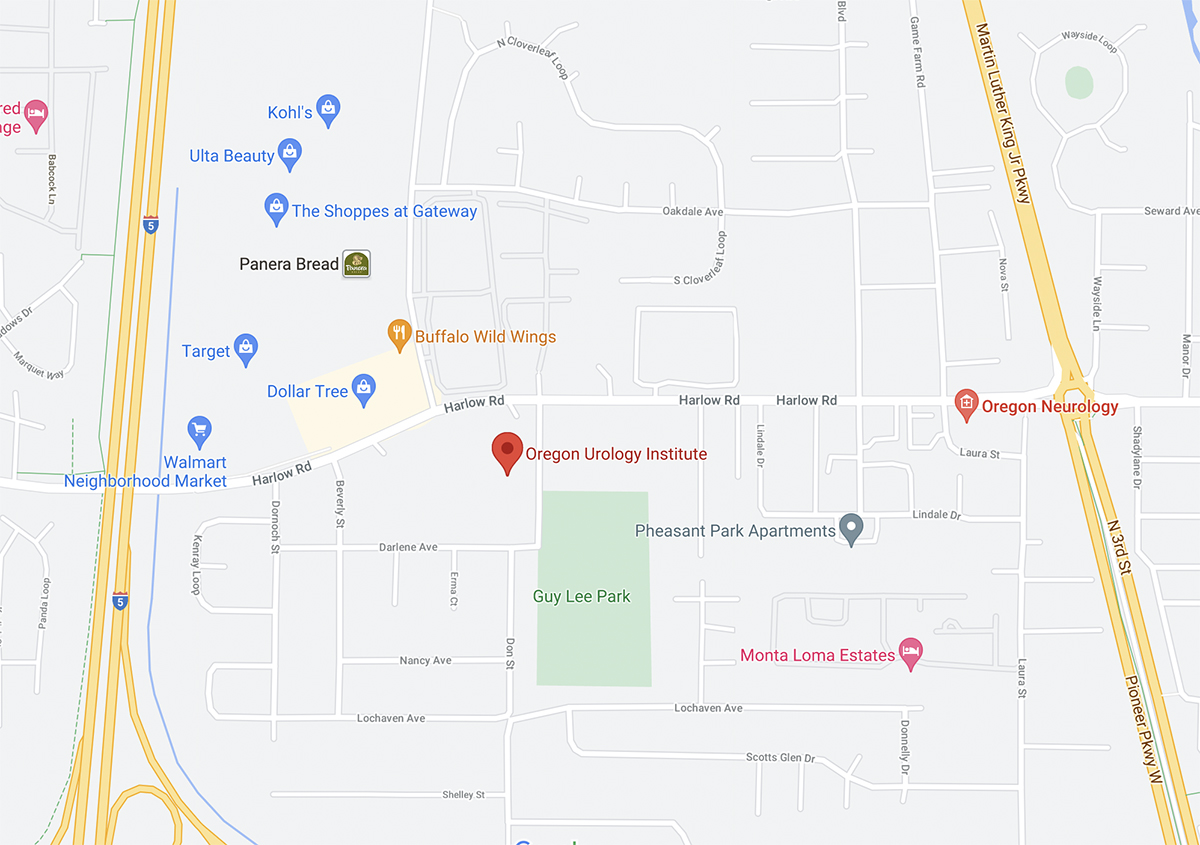AXONICS FOR OAB

Overactive bladder (OAB) can be quite disruptive to your life.
You might find yourself with a sudden, uncontrollable urge to urinate, along with other symptoms, including:
- Frequent urination, often more than eight times a day
- Waking up multiple times at night to urinate (nocturia)
- Feeling a constant need to urinate even after just going
- Disrupted daily activities due to the frequent need to urinate
Bladder incontinence, or urinary incontinence, means you can’t control when you urinate. Urine leakage can be embarrassing and frustrating due to not reaching the bathroom in time.
Symptoms such as these can interfere with your daily life.
In many cases, symptoms of OAB are caused by abnormal communication between the brain and the bladder.
If you’ve tried other treatments that haven’t worked, Axonics sacral neuromodulation therapy might be the right solution.


WHAT IS AXONICS?
Axonics therapy is an innovative treatment designed to offer long-term relief for those suffering from OAB. It uses electrical stimulation to target a sacral nerve root, helping to restore normal communication between the brain and the bladder.
The sacral nerves are important for bladder control. They are located in the lower back, near the triangular bone at the base of the spine. They act as messengers between the brain and the bladder, helping to regulate when you need to go to the bathroom.
When these nerves send and receive the right signals, they help control your bladder’s muscles, ensuring everything works correctly. If there’s miscommunication, it can lead to issues like OAB.
HOW AXONICS WORKS
The Axonics device is a small device that is implanted under the skin during a minor surgical procedure. Once in place, it sends mild electrical impulses to the sacral nerves, helping to regulate bladder function and reduce episodes of urinary urgency, frequency, and leakage.
THE AXONICS IMPLANTATION PROCESS
Evaluation
Before starting Axonics therapy, you’ll undergo a comprehensive evaluation to determine if you’re a suitable candidate. This evaluation might include:
- Your medical history
- A symptom diary to track frequency, urgency, and incontinence
- Physical examination
- Urodynamic testing to see how your bladder is holding and releasing urine
- Imaging tests such as ultrasound
Trial period
Before committing to the full implant procedure, you have the opportunity to try Axonics therapy through a trial period. A temporary device delivers the same stimulation you’d get with the permanent implant. It’s a simple procedure where the device is placed externally, and you can see how it impacts your symptoms over a short period. It is a great way to determine if Axonics therapy is right for you before moving forward with the implant.
Device placement
Axonics device implantation is a minimally invasive procedure that usually takes less than an hour and is performed under anesthesia, ensuring you won’t feel anything during the process.
The surgeon makes a small incision in your lower back to implant the device just under your skin. Thin, flexible wires called leads are positioned near your sacral nerves to carry gentle electrical impulses from the device to your nerves.
Before closing the incision, the surgeon tests the device to ensure it is correctly positioned and working properly.
Post-procedure care
After the surgery, you might experience some soreness or discomfort at the implant site, but this can usually be managed with over-the-counter pain medication.
Follow-up appointments will be scheduled to monitor your healing and adjust the device settings to meet your needs. This might involve several sessions to fine-tune the stimulation parameters based on your response and symptom improvement.
Long-lasting relief
One of the standout benefits of Axonics therapy is its incredibly long-lasting battery, designed to last up to 15 years. This means you won’t have to worry about undergoing additional procedures, and you can enjoy the peace of mind that comes from knowing your device will keep working effectively for many years.
FAQs
What does the stimulation from the Axonics device feel like?
The sensation from Axonic is described as a mild, tingling, or pulsing feeling in the pelvic area. Most patients find it comfortable and get used to it quickly. The intensity of the stimulation can be adjusted to ensure it is effective and comfortable for you.
How long does it take to see symptom improvement with Axonics therapy?
Many patients notice an improvement in their OAB symptoms shortly after the Axonics® device is activated. However, it might take several programming sessions over a few months to fine-tune the device settings and achieve the best results. Your doctor will work closely with you during this period to adjust stimulation based on your symptoms.
Can the Axonics device be removed if needed?
Yes, the Axonics device can be removed if necessary. The removal procedure is similar to the implantation process and is minimally invasive. If you experience any issues or decide you no longer want the device, your doctor can safely remove it. It’s important to discuss any concerns with your doctor, who can provide guidance on the best course of action.
Can I resume my normal activities with the Axonics device implanted?
Yes, most patients can return to normal activities soon after the Axonics device is implanted. There may be some restrictions immediately following the surgery to allow for proper healing, such as avoiding heavy lifting and strenuous exercise. Your doctor will give you specific instructions on what activities to avoid during the initial recovery period. Once healed, you can typically resume your regular daily activities, including exercise, work, and hobbies, all with greater symptom relief!






